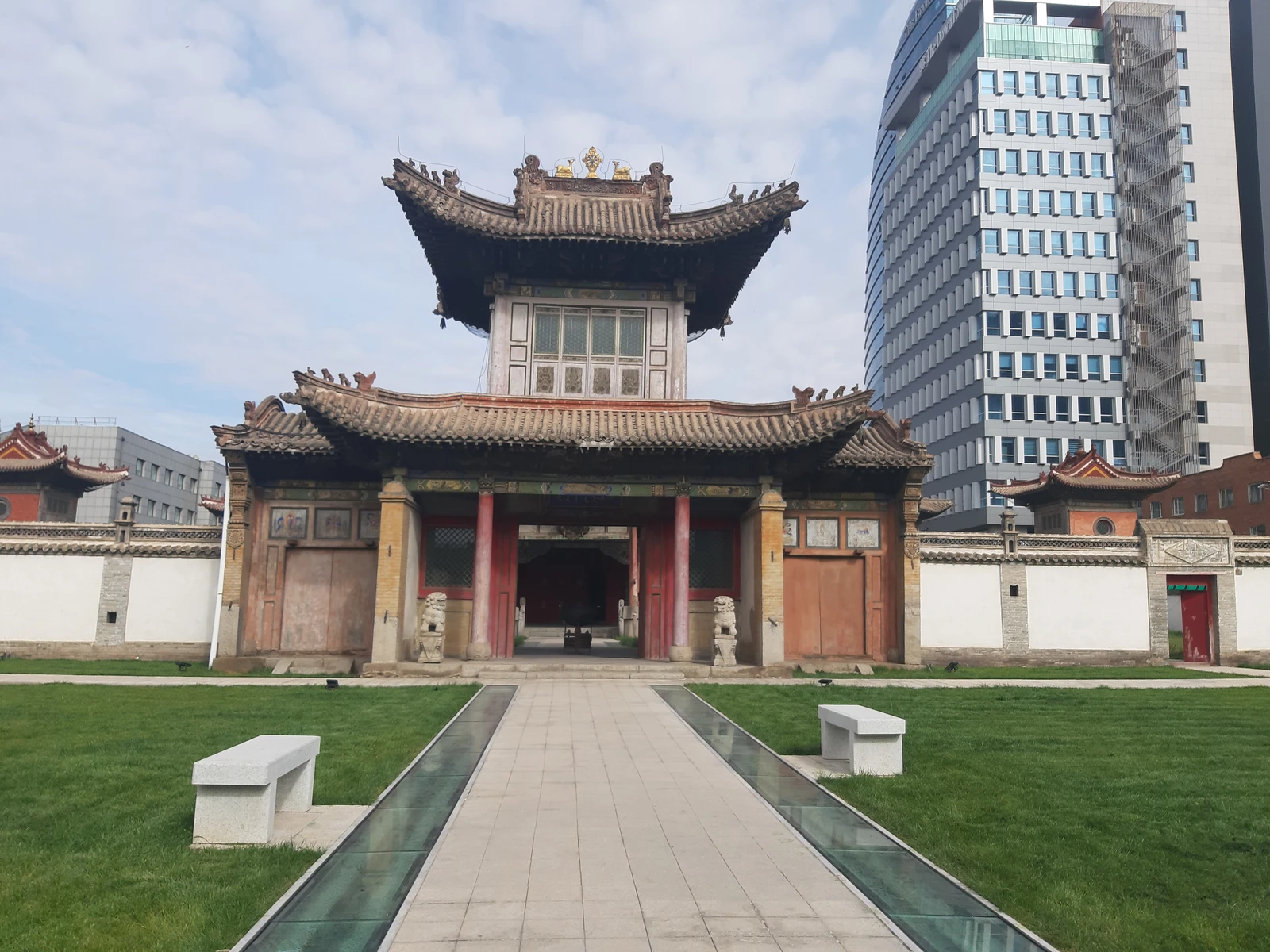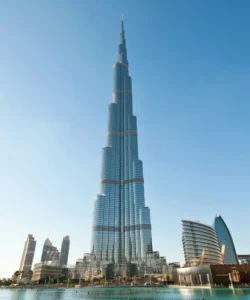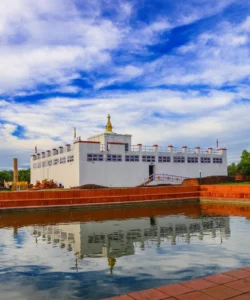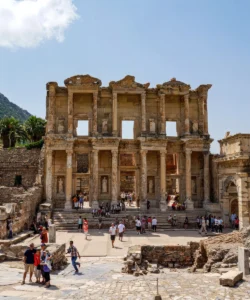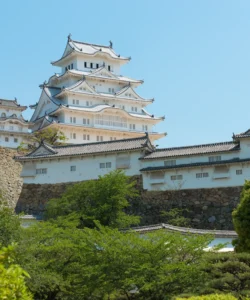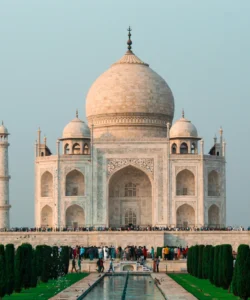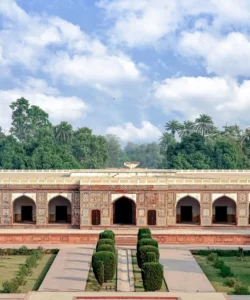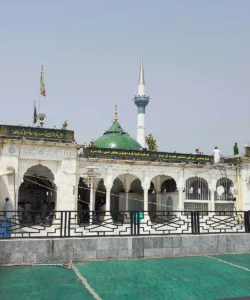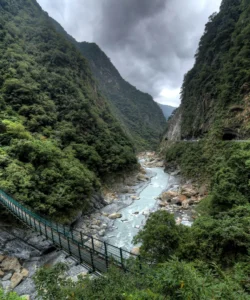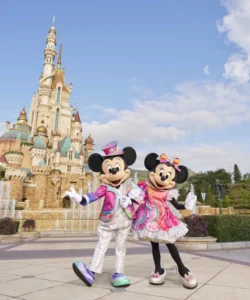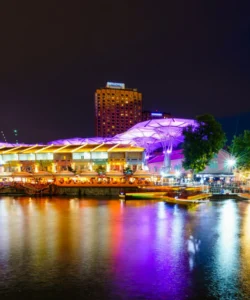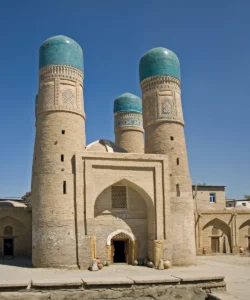The Choijin Lama Temple Museum is a unique and wonderfully preserved Buddhist monastery complex located in the heart of Ulaanbaatar, Mongolia. Built in the early 20th century, it stands as a testament to the rich artistic and religious heritage of pre-revolutionary Mongolia, and remarkably, it was one of the very few monasteries to survive the devastating communist purges of the 1930s.
Listen to an introduction about Choijin Lama Temple Museum
![]()
Name: Choijin Lama Temple Museum (Чойжин Ламын Сүм Музей, Choijin Lamyn Süm Muzey)
Address: Dashchoilin Road 5, Ulaanbaatar, Mongolia. It is conveniently situated just one block south of Sukhbaatar Square, making it easily accessible in downtown Ulaanbaatar.
How to get there:
Given its central location, reaching the Choijin Lama Temple Museum is straightforward:
- On Foot: If you are staying in the central part of Ulaanbaatar, particularly around Sukhbaatar Square, the museum is just a short, pleasant walk.
- By Taxi: Taxis are readily available throughout Ulaanbaatar. Simply provide the address or name to the driver.
- By Public Bus: Various public bus routes stop near Sukhbaatar Square or on Genden Street, from where the museum is a short walk.
Landscape and Architecture:
The Choijin Lama Temple Museum is an exquisite example of traditional Mongolian Buddhist architecture, heavily influenced by Tibetan and Chinese styles. The complex is characterized by:
- Five Temples: The museum is a compound of five distinct temples, each with unique decorations and purposes. These include the Main Temple of Refuge-Bestowing, the Temple of Manarayas (or Maharajas, housing the Four Guardian Kings), the Zuu Temple (dedicated to Buddha Shakyamuni), the Yadam Temple, and the Amgalan Temple.
- Ornate Design: The temples are renowned for their intricate details, featuring multi-tiered roofs with upturned eaves (characteristic of East Asian architecture), vibrant colors, elaborate wood carvings, and beautiful green tile roofs adorned with animal-shaped ornaments.
- Enclosed Compound: The temples are set within a walled compound, creating a serene oasis amidst the bustling modern city that has grown up around it. This juxtaposition of old and new is a striking visual.
- Rich Interiors: The interiors of the temples are a treasure trove of Buddhist art, filled with golden statues, colorful murals, thangkas (scroll paintings), silk embroideries, and ceremonial objects.
- Notable Statues: The Main Temple features an 18th-century gilt statue of Buddha Shakyamuni, along with a statue of Choijin Lama Luvsankhaidav (the brother of the 8th Bogd Khan, to whom the complex was dedicated), and the mummified remains of Choijin Lama’s teacher, Baltung Choimba.
- Cham Dance Masks: The museum boasts one of the largest and finest collections of Tsam (Cham) dance masks in the country, intricately embroidered with corals and other precious materials.
What makes it famous:
The Choijin Lama Temple Museum is famous for several key reasons:
- Survival of Purges: It is one of the very few Buddhist monasteries in Mongolia that miraculously survived the anti-religious purges of the 1930s, which saw the destruction of thousands of monasteries and the killing of tens of thousands of monks. It was preserved by being designated as a “museum of religion” in 1942, intended to show the “feudal” past. This makes its intact preservation extremely rare and historically significant.
- Architectural Masterpiece: It is widely considered an architectural masterpiece of the late 19th and early 20th centuries, showcasing the pinnacle of Mongolian craftsmanship in woodcarving, sculpture, painting, and embroidery from that period.
- Rich Collection of Buddhist Art: The museum houses an extensive and invaluable collection of Buddhist art and artifacts, including works by Mongolia’s renowned 17th-century artist and religious reformer, Zanabazar, along with unique Tsam dance masks, bronze statues, and silk thangkas.
- Personal Monastery of a State Oracle: It was built for Choijin Lama Luvsankhaidav, the younger brother of the 8th Bogd Khan and the state oracle of Mongolia. This personal connection to the country’s spiritual and political leadership adds to its unique historical context.
- Central City Location: Its position right in the heart of modern Ulaanbaatar makes it a highly accessible and poignant reminder of Mongolia’s past amidst its rapidly developing present.
Differences from some other wonders:
The Choijin Lama Temple Museum stands apart from other wonders, particularly other Mongolian monasteries, in distinct ways:
- Preserved, Not Rebuilt (or minimally rebuilt): While Gandantegchinlen Monastery in Ulaanbaatar was allowed to function nominally and then fully revived, and Erdene Zuu Monastery was largely destroyed and then meticulously rebuilt/restored, the Choijin Lama Temple Museum was preserved in its original form as a museum during the communist era. This means its architectural integrity and the authenticity of its art collection are largely untouched by later reconstruction efforts, offering a more direct and unadulterated glimpse into pre-revolutionary Buddhist art.
- Museum Function vs. Active Worship: Unlike Gandantegchinlen, which is a fully active monastery with hundreds of monks, the Choijin Lama Temple Museum is primarily a state-run museum. While visitors may observe individuals praying to deities on display, it is not an active place of daily monastic worship in the same way as Gandan. This provides a different kind of experience – one focused on art and history rather than ongoing religious practice.
- Focus on Artistry and Craftsmanship: While all monasteries contain art, the Choijin Lama Temple Museum has a specific reputation for the exceptional quality and preservation of its fine arts, particularly its woodcarvings, silk embroideries, and cham masks, showcasing the peak of Mongolian craftsmanship from its era.
- Intimate and Contemplative Scale: Compared to the sprawling and grand Gandantegchinlen, the Choijin Lama Temple Museum, while composed of multiple buildings, feels more intimate and contemplative due to its specific preservation as a museum. Its walled compound creates a quiet sanctuary.
- Unique History of Survival: Its survival against the backdrop of immense destruction during the 20th century is a narrative almost unparalleled among religious sites of its kind in Mongolia. It’s a testament to the power of state decree, even if ironically given.
In essence, the Choijin Lama Temple Museum is a rare and precious jewel, offering an unparalleled window into the artistic splendor and religious depth of a bygone era of Mongolian Buddhism, remarkably preserved against the tides of history.
